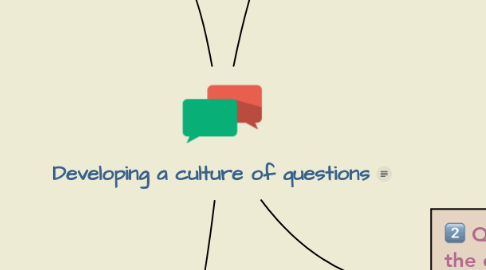Developing a culture of questions
作者:Annie Yip

1. A culture of questions
1.1. Listen to the questions being asked and guide our students in answering them
1.2. Be mindful of the example we set in the questions we are posing to our students
1.3. The roots of learning are cultivated in a mindset that sees value in actively pursuing questions—which is something the teachers must also model themselves
1.4. Make connections between what students already know and new information and experiences, driving their desire to find out more about the world around them
2. Emergent questions within inquiries
2.1. Using a “Parking lot” strategy for emerging questions
2.2. “What makes you say that?” is an excellent way to draw more information from students
2.3. Giving the students time and space to think, reflect, and pose their own questions help them to see that their thinking is valued
2.4. Ensuring that the questions we ask have the scope to allow for deeper thinking
3. Provocations and questions
3.1. We need to listen to what the students say and give them time to process their initial ideas
3.2. Starting with student questions, and facilitating their ability to connect these back to themselves and the world around them should be the driving focus
4. Questions can determine the direction of inquiry
4.1. Students begin by making a connection between the central idea and their own curiosities. And they write questions.
4.2. Using the concept-question cards with students, think about which conceptual lens are we looking through
4.3. Organize the questions into a conceptual grid so we can see where our questions are taking us
4.4. Using the Visible Thinking Routine “Question Sorts" to help students refine their question selection


